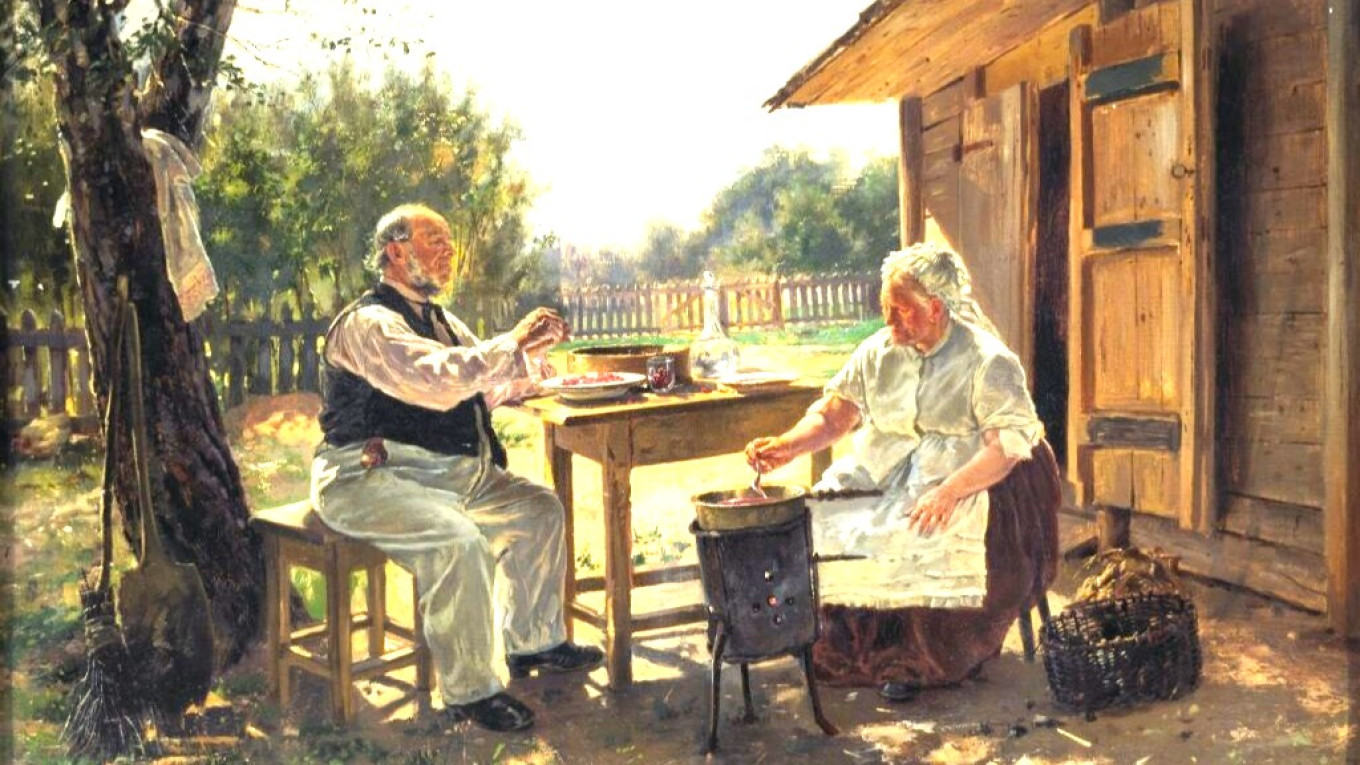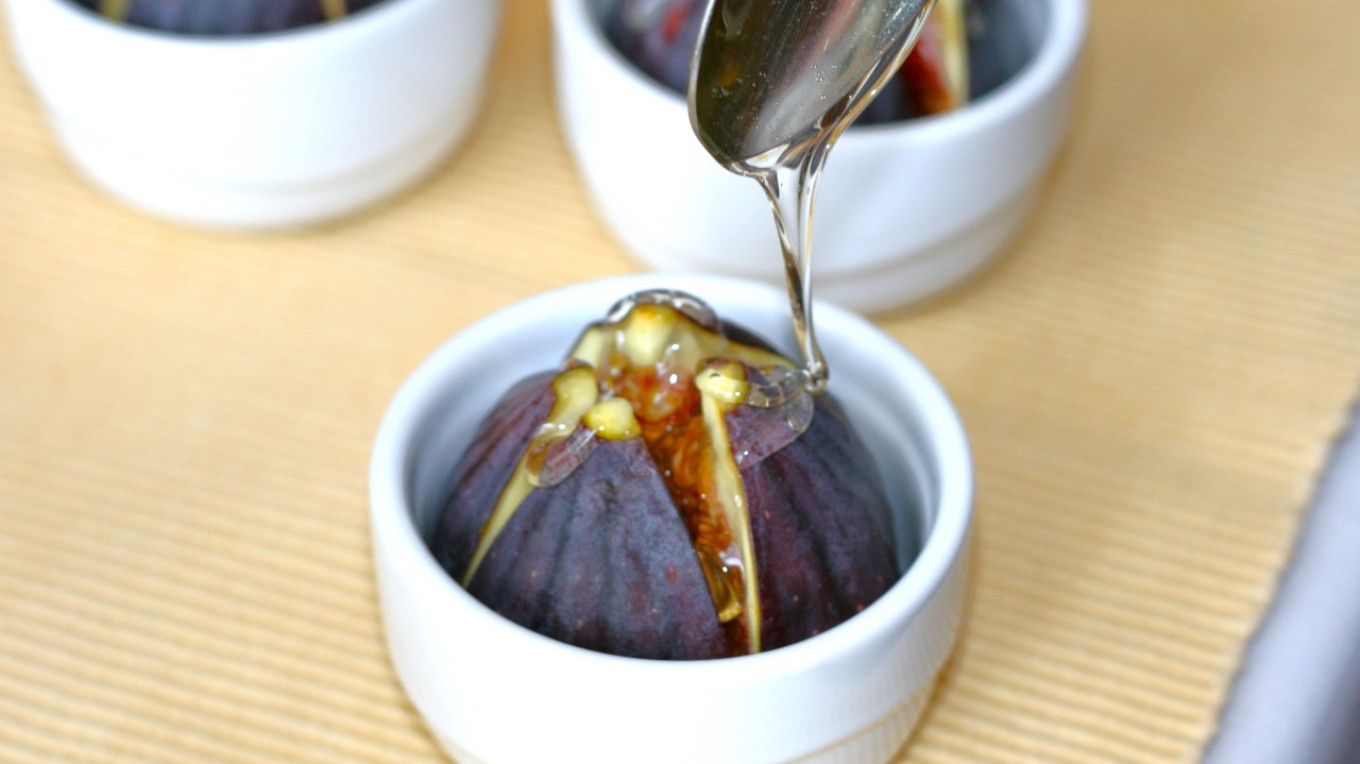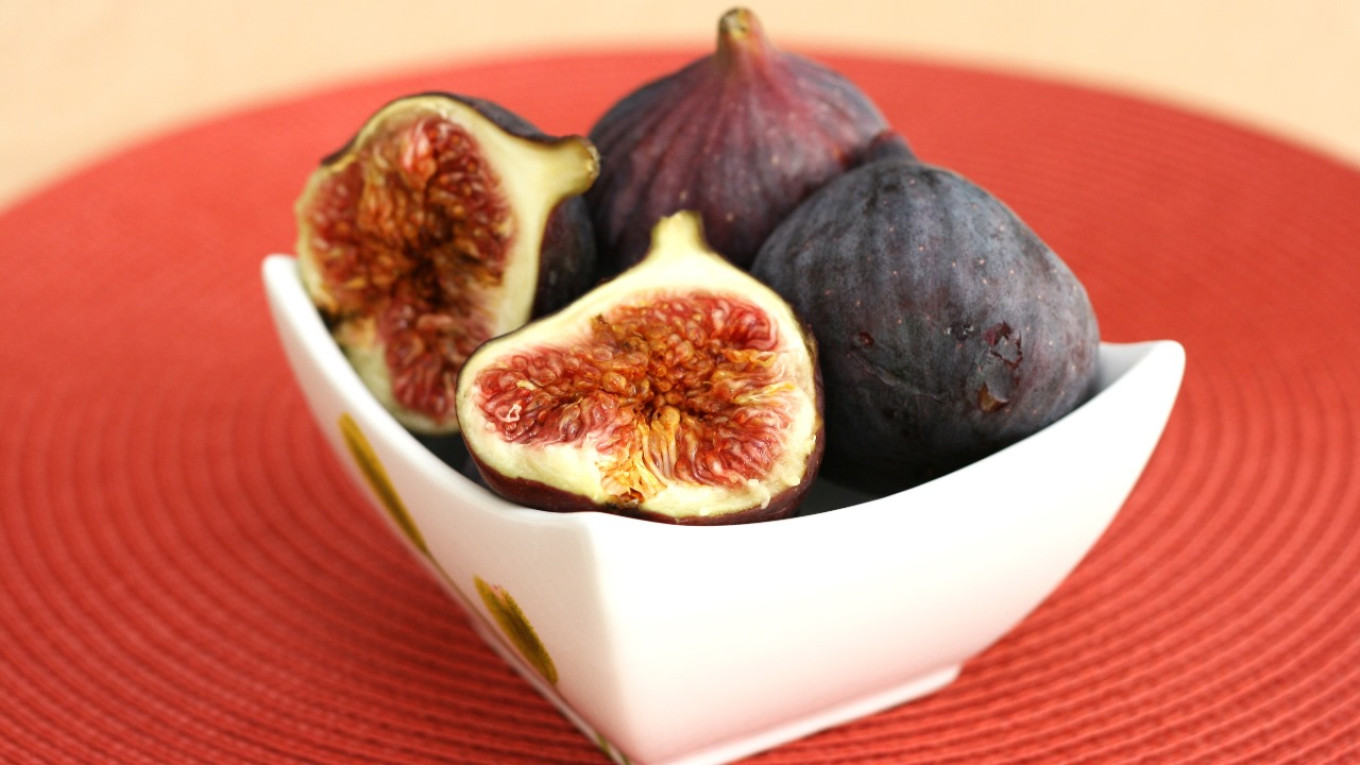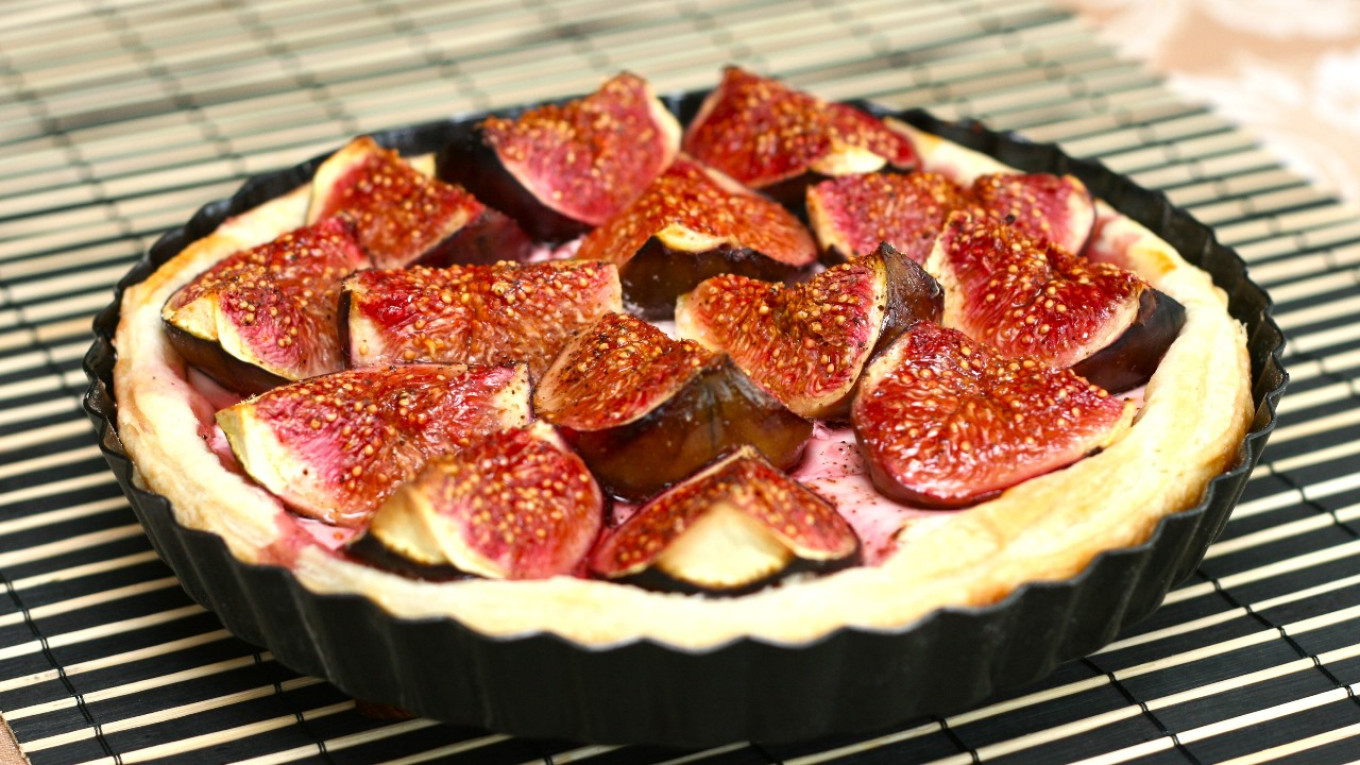The fig might seem to be an exotic fruit, but it has been a culinary treat in Russia for ages. Hundreds of years ago it was brought by Asian merchants to Muscovy. Most commonly called a wine berry, this fruit was written about in many ancient books.
Figs are an amazing fruit. They are harvested twice a season, once as early as August and the second time in September. The fig holds the record for mentions in the Bible and may well be considered one of the oldest known products to have appeared in the diet of mankind.
Despite the fact that the habitat of the Old Testament plant — the Ficus genus of the mulberry family —was the Middle East, it is difficult to call it exotic in Russia. Figs have been firmly a part of Russian cuisine for a long time.
The Russian word for fig — инжир (inzhir) — is Turkic. The Ipatiev Chronicle which describes the campaign of Russian princes against the Polovtsians in 1183, mentions a “fig fording place” across the Dnieper. Whether merchants carried these sweet fruits across the ford or whether something about the the fording place reminded them of figs is impossible to know today. But the word for figs seems to have been familiar at the time. But then it was displaced by home-grown Russian fruit for many centuries.

Wine berry, смоква (smokva), smokva berry, Smyrna berry (apparently in honor of the Greek trading city of Smyrna, today's Turkish Izmir) — these are just some of the names of figs that can be found in ancient books. Later they were also joined by an Italian word: “fig.” We began to call the fruit inzhir again only in the last century.
When historian Nikolai Karamzin described a feast arranged in honor of the birth of the future Emperor Peter the Great, he wrote about the "huge platters with smokva berries, candied fruits and lemons." In the past only dried figs were brought to Russia, since they could be stored for a long time and were especially sweet.
Russians have loved this fruit so much that the word "смоква" gradually began to describe all dried sweets. This is understandable: figs became gradually synonymous with all the most delicious and sweet fruits. Even at the end of the 19th century you could find recipes in Russian cookbooks called "fruit butter or smokva” that were made of a variety of fruits.

Ancient Russian dishes with figs include a "wine berry decoction": figs boiled in honey with spices (cloves, cardamom, ginger). The earliest Russian book of recipes and house management, "Domostroi," in the middle of the 16th century wrote about a sweet bread made with wine berries. In the 19th century, with more familiar recipes and tastes, the famous Guryev porridge included figs. And the craze for vegetarianism and healthy eating in the early 20th century led to a recipe for coffee made from barley and wine berries.
In recent years, figs have been particularly popular with epicures, and dishes with this fruit have appeared on the menus of restaurants of all sorts. Sometimes it seems that figs are once again on the cutting edge of culinary fashion.
Figs are excellent fresh, baked, caramelized, as well as made into mousse or sorbet. The seeds provide texture and wake up your taste buds. Figs go well with quail, duck, grilled beef, roasted beets, pâtés, leafy salads — and of course, as a dessert with soft and blue-veined cheeses. Many delicious and interesting dishes can also be prepared from dried figs. Finally, figs make very tasty jams and jellies that which can be enjoyed alone or used in other dishes all year round.

This summer buy some fresh ripe figs and try this dish, which combines an ancient product and modern flavor.
Fig Pie
Ingredients
A baking tin - 23-24 cm (9-10 inches) in diameter
For the dough:
- 200 g (7 oz or 1 ¼ c) flour
- 100 g (3.5 oz or ½ c) sugar
- 15 g (1/2 oz or 2 ½ Tbsp) almond flour
- 100 g (7 Tbsp or 3.5 oz) melted butter (room temperature)
- 1 egg
- 1 egg yolk
- 1 tsp baking powder
- grated zest of 1/2 lemon
- pinch of salt
For the filling (custard):
- 30 g (1 oz or scant 4 Tbsp) flour
- 45 g (1.6 oz or scant 4 Tbsp) sugar
- 1 egg yolk
- 250 ml (1 c) milk
- zest of one lemon
For caramelized figs:
- 500 g (generous 1 lb) figs
- 1 Tbsp melted butter
- 2 Tbsp sugar
- 1/2 tsp cinnamon

Instructions
- Mix together all the dry ingredients — flour, sugar, almond flour, salt, baking powder and lemon zest. You can do this in a bowl or food processor — whatever you prefer. Add the oil, egg and egg yolk, and quickly knead the dough. First use the blade of a table knife (much more convenient than a spoon — less dough sticks to it), and then your hands. Wrap the dough in cling film and put it in the refrigerator for about an hour and a half. Take the dough out of the refrigerator 15 minutes before assembling the pie.
- Preheat the oven to 180°C / 355°F.
- Prepare the custard. In a saucepan, heat the milk almost to a boil and remove from the heat. In a small bowl, beat the egg yolk with the sugar to a thick froth and gradually add the flour. Mix thoroughly and gradually pour add the milk in small portions. Return the egg-milk mixture to the saucepan and place over very low heat. Stirring constantly and vigorously, cook until thickened but not boiling. Remove from the heat and add the lemon zest. Cool a little.
- At this point take the dough out of the fridge and start preparing the figs. Wash and cut large figs into quarters and small figs in half. In a skillet over medium heat, heat the butter and sugar, pour in the cinnamon and place the fruit cut side down. Heat for 5 minutes, turn the figs over and remove from the heat.
- Roll out the dough to about ½ cm (1/4 inch) to fit the size of your mold. Spread the custard, smooth the surface, lay the fruit on top of the of the custard, pour the caramelized juice on top and put in the oven for 20 minutes.
- Let the pie cool completely. The cream in the pie will firm up very well and will not spread.

A Message from The Moscow Times:
Dear readers,
We are facing unprecedented challenges. Russia's Prosecutor General's Office has designated The Moscow Times as an "undesirable" organization, criminalizing our work and putting our staff at risk of prosecution. This follows our earlier unjust labeling as a "foreign agent."
These actions are direct attempts to silence independent journalism in Russia. The authorities claim our work "discredits the decisions of the Russian leadership." We see things differently: we strive to provide accurate, unbiased reporting on Russia.
We, the journalists of The Moscow Times, refuse to be silenced. But to continue our work, we need your help.
Your support, no matter how small, makes a world of difference. If you can, please support us monthly starting from just $2. It's quick to set up, and every contribution makes a significant impact.
By supporting The Moscow Times, you're defending open, independent journalism in the face of repression. Thank you for standing with us.
Remind me later.







